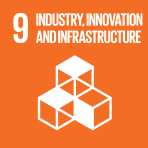- Home
- Sustainable Development Goals
- Industry, Innovation and Infrastructure
 Industry, Innovation and Infrastructure
Industry, Innovation and Infrastructure
The economic scale of business e-commerce sales varies
Jul 2024
Chapter
To gain a perspective on their economic scale it may be useful to compare the value of business e-commerce sales to GDP. It is critical that this is not misinterpreted as a contribution to GDP. The latter is a measure of value added and is therefore not directly compatible with statistics that sum all business e-commerce sales including those made to other businesses for use as inputs.
Digitalization and artificial intelligence in the creative economy
Main Title:
Creative Economy Outlook 2024
Jul 2024
Chapter
The chapter examines how creative industries adopted digitalization and artificial intelligence and how this is transforming the creative economy. Creative products are produced distributed and consumed differently in a digital world powered by artificial intelligence. In this context creative work can be more costefficient and reach a wider audience. This new reality entails essential policy challenges and responses in the creative economy. For example t Read More
E-commerce is an increasingly important sales channel for businesses
Jul 2024
Chapter
Selling over the Internet is increasingly important for doing business. Today many enterprises are “born digital” selling online only while others mix increasing online sales with taking orders by other means notably over the phone or in person. For successful online sellers key benefits include the ability to reach new customers domestically and abroad in a way that is relatively low cost and convenient for both buyers and sellers. Online only businesses can also Read More
Conclusions
Jul 2024
Chapter
This note has presented the latest statistics on the value of e-commerce sales by businesses. It benefits from a significant increase in availability brought about by the release by Eurostat of figures for many EU and partner countries.
No more items...
